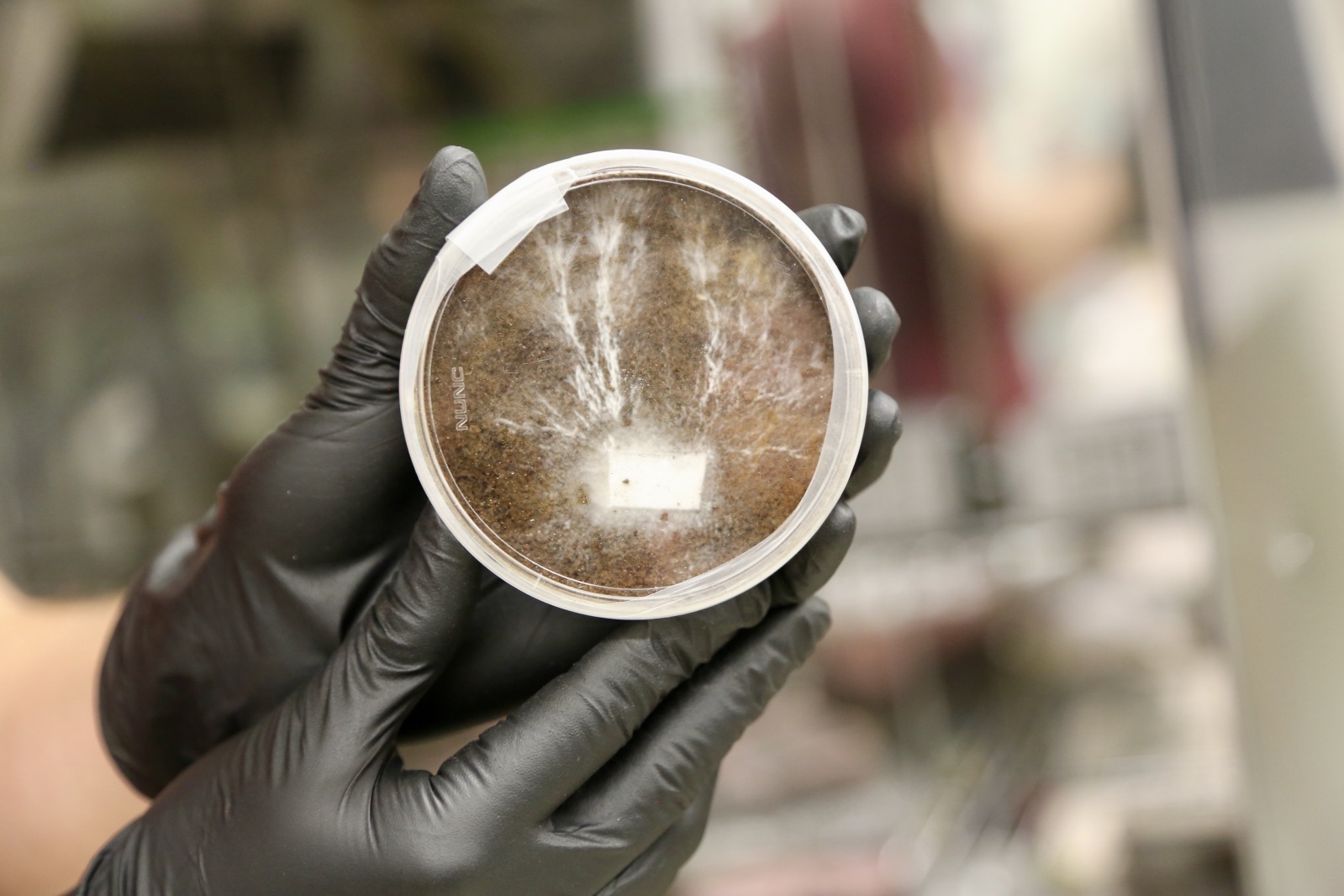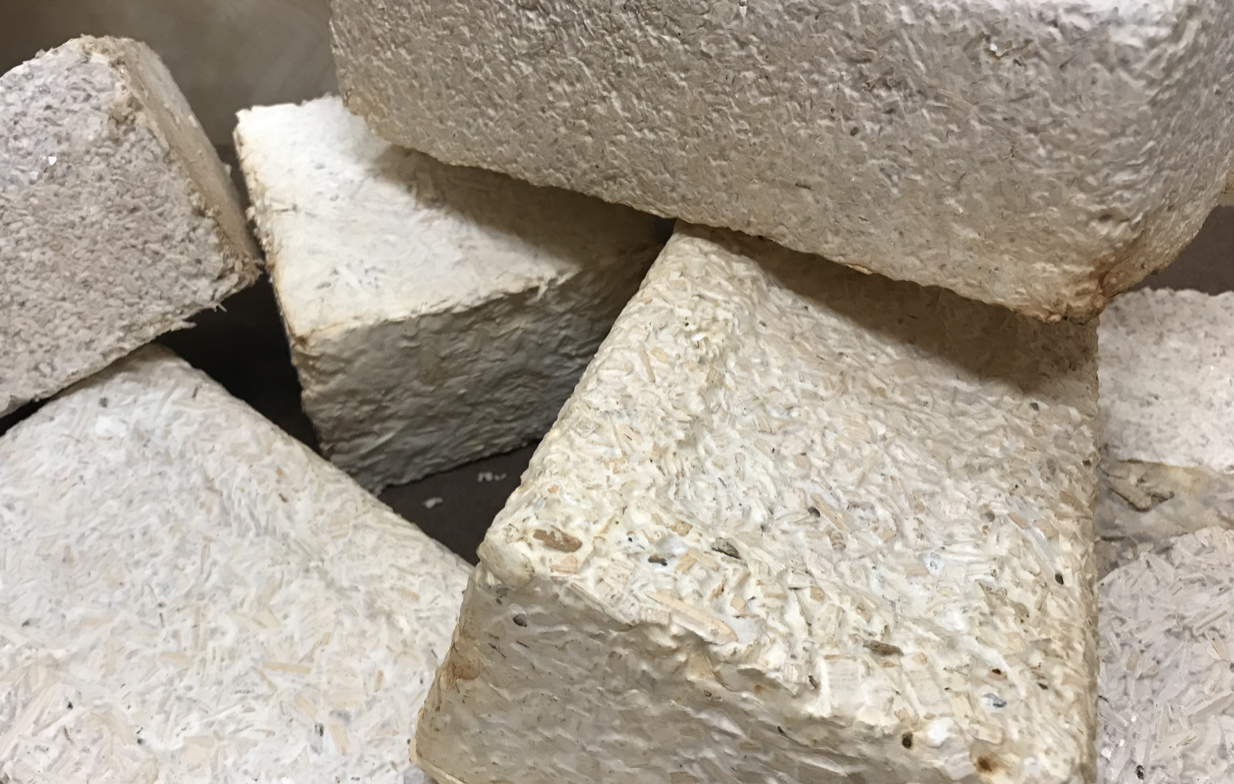There could be fungus among us on Mars with this wild astronaut house idea
Mars visitors may live in a mush-room.

A strange consequence of Lynn Rothschild's current research is that she ends up snapping photos of the more exotic mushroom offerings she encounters in the grocery store's produce aisle.
Rothschild, an astrobiologist and synthetic biologist at NASA's Ames Research Center in California, recently won a second round of funding from the NASA Innovative Advanced Concepts (NIAC) program. The program is designed to fund technology that could someday be used for exploration but is currently far from ready to fly.
Rothschild's contribution to the program's portfolio? Building habitats and other space infrastructure on site from fungi. "I just never thought that I'd be pitching mushrooms to NASA," Rothschild told Space.com.
Related: Living underground on the moon: How lava tubes could aid lunar colonization
Technically, she noted, it's not quite mushrooms: Mushrooms are the reproductive organs of fungi, transient structures produced by mycelia, the wide-spreading network of tissue that makes up the bulk of a fungus but is hidden from human sight within whatever soil, log or old tree the fungus lives on.
"You don't want — I mean, I guess maybe you do want mushrooms growing on your table, but you don't want necessarily a habitat that suddenly has mushrooms popping out all over the place," she said. "So it's worth making sure you've got a strain of fungus that's happy to grow without producing mushrooms.
Inspired by working with a student team to design a biodegradable drone grown of mycelia, Rothschild started thinking about the material in the context of space exploration. A few years ago, that project received initial NIAC funding, which let the team begin experimenting with building in fungus: shaping the material with "a mold for the mold," giving it some waste product like lawn clippings or coffee grounds to strengthen the material, then halting the fungal growth.
Get the Space.com Newsletter
Breaking space news, the latest updates on rocket launches, skywatching events and more!

"We'd never really grown this stuff before," Rothschild said. "So we got that stuff into the lab." The initial work focused on a few different species of fungi, explored what types of material they can grow on (including imitation dust from the moon and Mars) and evaluated how processes like baking the mycelia change its structural properties.
The team grew some bricks of material, and even built a stool of the material undergirded by plywood. "I've sat on it, the students have sat on it; they made that in about two weeks," Rothschild said. "We've shown that there's a 'there' there."
Now, the team is back for a second round of work. This time, Rothschild and her colleagues intend to build more objects from mycelia, try a few more types of fungi and expose their constructions to the types of conditions such materials would experience on the moon or Mars to see how the creations hold up.
Given NASA's Artemis program to return humans to the moon, Rothschild and her team are focusing particularly on potential lunar applications and constraints. For example, the moon's surface temperature fluctuates dramatically over the month-long days, which could open opportunities for growing the mycelia during the cold nights, then baking the results as the temperature skyrockets.
But the researchers have also considered how the mycelial material could be used on Mars, where planetary protection is a serious concern and introducing an Earthly organism that could potentially thrive on the Red Planet is verboten. "I think everyone's happier if it's in an enclosed, sort of double-bagged situation," Rothschild said of the fungus, noting that she has discussed the issue with NASA's planetary protection officer.

The team's main priority with the NIAC project is designing inflatable scaffolds that would shape the mycelia into the needed shape. But the team is also exploring glues that could bind together blocks of mycelia using special proteins.
That approach might be more efficient for building large structures, Rothschild said, although she doesn't expect any size constraints on the material itself. "There is a reason that New York City is built with bricks," she said. "Rather than sitting around waiting for an entire structure to grow, maybe you do grow it in pieces."
Both phases of the project have gone beyond scientists. The team has pulled in architects to design habitats with the material and, in the new research, begin tackling issues like how to incorporate air ducts and plumbing systems.
The project is also considering how the material could be used on Earth, bringing in restaurants interested in more sustainable products. Rothschild has her eye on someday building playground equipment out of the material. After all, when a mycelial object wears out, it's easy to give back to the Earth. "This is totally ecologically friendly," she said.
And for her, the project is more about making mycelial material a reality, no matter where it ends up being used.
"Whether there are some day really buildings on Mars made of fungal mycotecture is almost not the point to me," she said. "I think there are so many things that can be done with this approach."
Email Meghan Bartels at mbartels@space.com or follow her on Twitter @meghanbartels. Follow us on Twitter @Spacedotcom and on Facebook.
Join our Space Forums to keep talking space on the latest missions, night sky and more! And if you have a news tip, correction or comment, let us know at: community@space.com.

Meghan is a senior writer at Space.com and has more than five years' experience as a science journalist based in New York City. She joined Space.com in July 2018, with previous writing published in outlets including Newsweek and Audubon. Meghan earned an MA in science journalism from New York University and a BA in classics from Georgetown University, and in her free time she enjoys reading and visiting museums. Follow her on Twitter at @meghanbartels.









